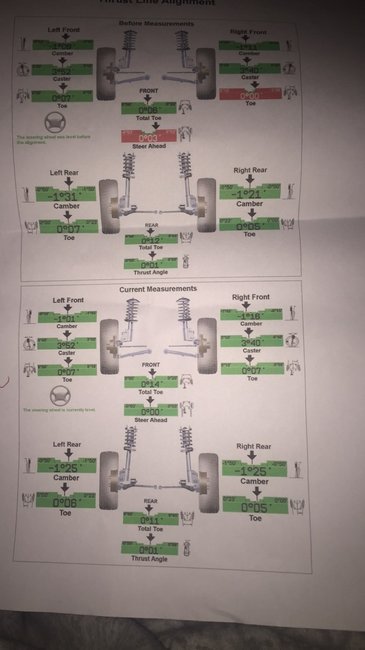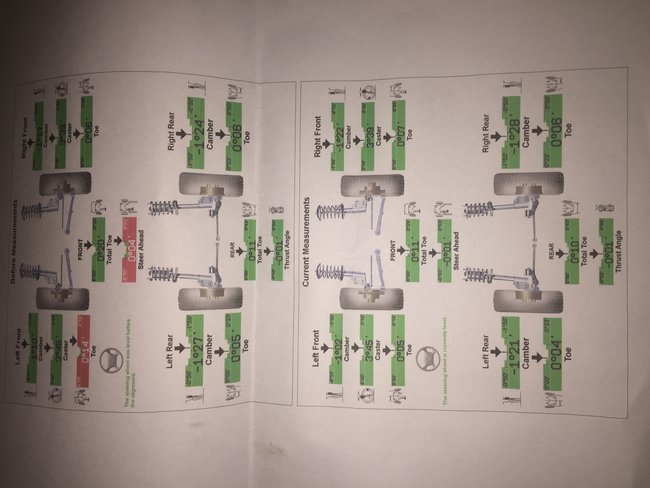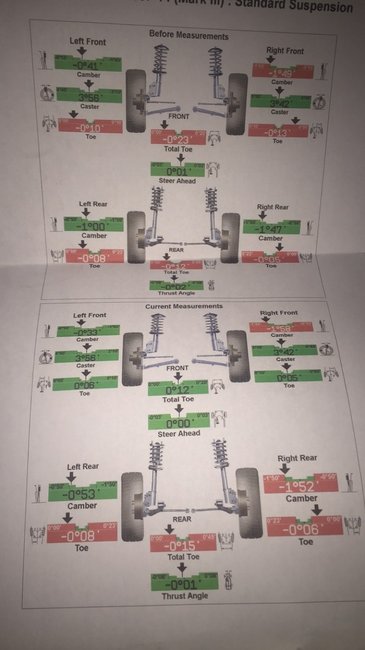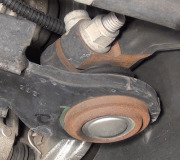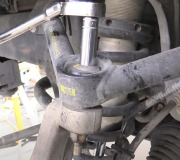The steering wheel position should have been adjusted before they gave the car back to you. To not notice that suggests they are not doing a proper test-drive after the alignment is done. I was a suspension and alignment specialist for over sixteen years, and I can tell you that most of what you were told is correct. I also used Hunter equipment, and while it is unreasonably expensive to buy and to service, it is accurate, but so are other brands of computerized alignment equipment.
I doubt this is the case anywhere today, but older non-computerized equipment only measured the alignment on the two front wheels, not the rear wheels. Computerized aligners can be set to measure just the front the same way, but no one does that for street-driven vehicles. All computer aligners use four sensor, one on each wheel, because it is extremely unlikely you're going to find the rear wheels are perfectly parallel to the car's center line. On just about every car, and even more so on front-wheel-drive models, the rear wheels are steering off to one side a little. Often that can be adjusted, but it can be difficult and time-consuming, so we just get it close enough. You will never see the 1/8" or less the rear of the car is off-center, or "dog-tracking", but to accommodate that steering to one side, you have to turn the steering wheel so the front wheels match the rear ones and all four are parallel. That is why the steering wheel can be off-center when the front wheels are in perfect alignment.
The point is, computer aligners use the readings from the rear wheels to see which way they are steering, then they compute where to adjust the front wheels to match them. The mechanic does not have to do any math in his head or calculate anything. He just sets the wheels to where the numbers on the screen are in specifications, but that brings up another problem. Numbers out-of-specifications are shown in red. Numbers in specifications are shown in green, and the range for those can be pretty big. Some mechanics just twist or tug on an adjustment until it is green, and that is good enough. For me that was never good enough. It takes just a few extra seconds to read the numbers and put that adjustment to where it is perfect.
Also, all aligners can be set up to take measurements in degrees to two decimal places of accuracy. Many mechanics set theirs up to read to just one decimal place because it is faster to get "close enough". That might be fine for most cars, but there will always be a few that require some followup adjustment. At the dealership I worked, we had many front-wheel-drive models that needed exactly 0.06 degrees more on the left side than on the right to make up for "road crown", (roads tilt to the side so rain water runs off). 0.10 degrees was too much and would cause a pull, but that is what an aligner would show if it rounded the readings to a single decimal place. If you have a printout of the alignment and the numbers only go to one decimal place, the mechanic is not getting the most accurate readings he could be getting.
If you have a printout of any of the alignments, post the numbers for front and rear "camber" and "toe", and I will decipher them. If anything shows the car should pull one way, but it is pulling the other way, a tire pull is a real good suspect. Sometimes that can be eliminated by switching the two front tires side-to-side, but usually they will pull the other way then. The next step is to switch them front-to-rear.
A clue to identifying a tire pull is to observe the pull is to one side when accelerating or cruising, and it is to the other side when braking. That typically only works on front-wheel-drive cars because they put a force on the tires when accelerating that makes the pull observable.
Wednesday, September 21st, 2016 AT 3:20 PM
